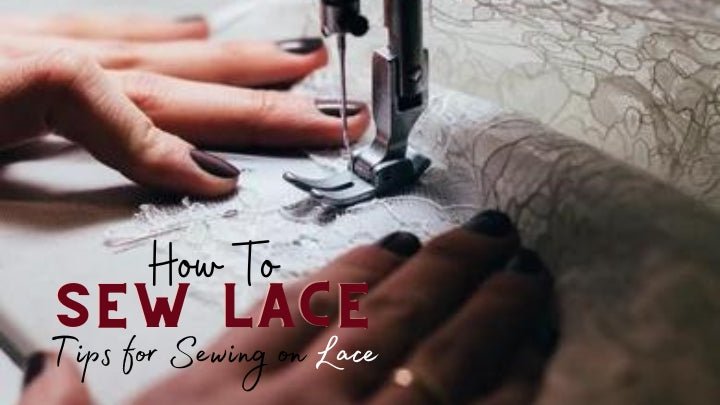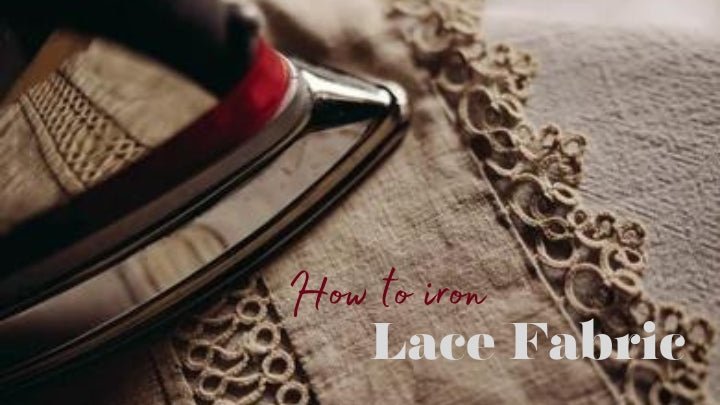Lace is a beautiful and delicate fabric that is popular for its versatility. Lace Fabric is commonly used in various fashion applications, such as wedding dresses, evening gowns, lingerie, and even home decor items like curtains and tablecloths.
Sewing with lace can add a touch of elegance and sophistication to any garment or project. However, for many sewing enthusiasts, working with lace can be quite daunting due to its delicate nature. Questions often arise about the best stitch to use, how to sew lace, and do you need a special needle to sew lace.
No need to worry; we will discuss the best stitches for lace, how to sew lace without a seam, tips for sewing on lace, and how to sew lace on fabric with a sewing machine. Additionally, we'll cover the importance of using the right needle and how to prevent the lace from fraying when cutting it to make the process smooth and enjoyable.
Is It Difficult to Sew Lace?
Sewing lace requires patience, precision, and careful handling, but it is not overly difficult with the right techniques. Beginners might find it a bit challenging initially due to the delicacy of the fabric, but with practice, they can achieve beautiful results. Taking the time to plan and strategize the placement of patterned lace and using suitable needles, stitches, and techniques will significantly improve the sewing experience.
Tips for Sewing on Lace
- Use the Right Tools
Ensure you have the necessary supplies for sewing lace, including fine sewing pins, sharp sewing needles (with stretch needles for stretch lace), and a sewing machine capable of zigzag stitches or an over locker for seams.
- Pre-wash the Lace
Some lace fabrics may shrink when washed, so it's advisable to pre-wash them before cutting and sewing.
- Cutting the Lace
Use sharp scissors or a rotary cutter to cut the lace carefully, avoiding stretching it out of shape.
- Consider Lining Options:
Sheer lace often requires a lining for modesty, and patterned lace may need partial lining to achieve seamless effects.
- Use Tailor's Tacks:
Instead of using pins, use tailor's tacks to mark the fabric and avoid snagging or leaving visible holes.
- Mind the Beads and Sequins
When working with lace embellished with beads or sequins, remove those that will be caught in the seams to avoid damaging your sewing machine.
How do you sew lace without a seam?
Sewing lace without a seam is possible, especially if the garment design allows for it. For instance, when working with patterned lace, you can create a partially lined effect, strategically placing the lace to reveal and conceal certain areas. By basting in the seam lines, you can ensure precise alignment of the lace pattern before stitching the pieces together. This technique results in a seamless and polished look for your lace garment.
What is the Best Stitch for Lace?
Choosing the right stitch for sewing lace is crucial to ensure a neat and secure finish. The best stitch for lace depends on the type of lace you are working with and the final look you want to achieve. For stretch lace, which requires flexibility, consider using an overlocker or a narrow zigzag stitch on your sewing machine. A zigzag stitch with a width of 1.5 and a length of 2.5 is a good starting point, but feel free to adjust it to suit your lace.
For sheer lace, especially when a lining is involved, straight stitches or French seams work well. These stitches provide a clean and elegant finish while ensuring the lining stays securely in place. For patterned lace, which may require partial lining, the zigzag stitch is again your friend, as it allows you to seamlessly join the lace pieces together for a cohesive look.
Can You Sew Lace with a Sewing Machine?
Yes, you can sew lace with a sewing machine. In fact, using a sewing machine can make the process more efficient and provide consistent stitches. Whether you're sewing seams on stretch lace or attaching a lining to sheer lace, a sewing machine can handle the task well. Just make sure to use the appropriate stitches and needle, as mentioned earlier, to avoid damaging the delicate fabric.
Do You Need a Special Needle to Sew Lace?
Using the right needle is essential when sewing lace to prevent snags and ensure smooth stitches. For regular lace fabrics, a sharp sewing needle will suffice. However, if you are working with stretch lace, opt for stretch needles to accommodate the fabric's elasticity. Using the correct needle will reduce the risk of skipped stitches and make your sewing process much more enjoyable.
Discover More: The Ultimate Guide To Ironing Lace With Finesse
Does Lace Fray When You Cut It?
Lace, being a delicate fabric with intricate designs, lace can fray when cut, and it's essential to take precautions to minimize this. Using sharp scissors or a rotary cutter helps achieve clean edges, which reduces fraying. Additionally, pre-washing the lace can help prevent excessive fraying in the future. If you notice fraying along the edges after cutting, you can use a fabric sealant or a zigzag stitch along the edges to secure the threads and prevent further fraying.
Faqs
Does lace have a grain line?
No, lace does not have a grain line. Unlike woven fabrics, lace is made through a delicate and unique pattern of threads, so it lacks a defined grain direction.
Is lace fabric sustainable?
The sustainability of lace fabric depends on its production methods and materials used. Some eco-friendly options made from organic or recycled fibers exist, but not all lace fabrics are inherently sustainable.
What type of lace is stretchy?
Stretch lace is the type that offers elasticity. It contains spandex or elastane fibers, allowing it to stretch and offer a comfortable fit.



